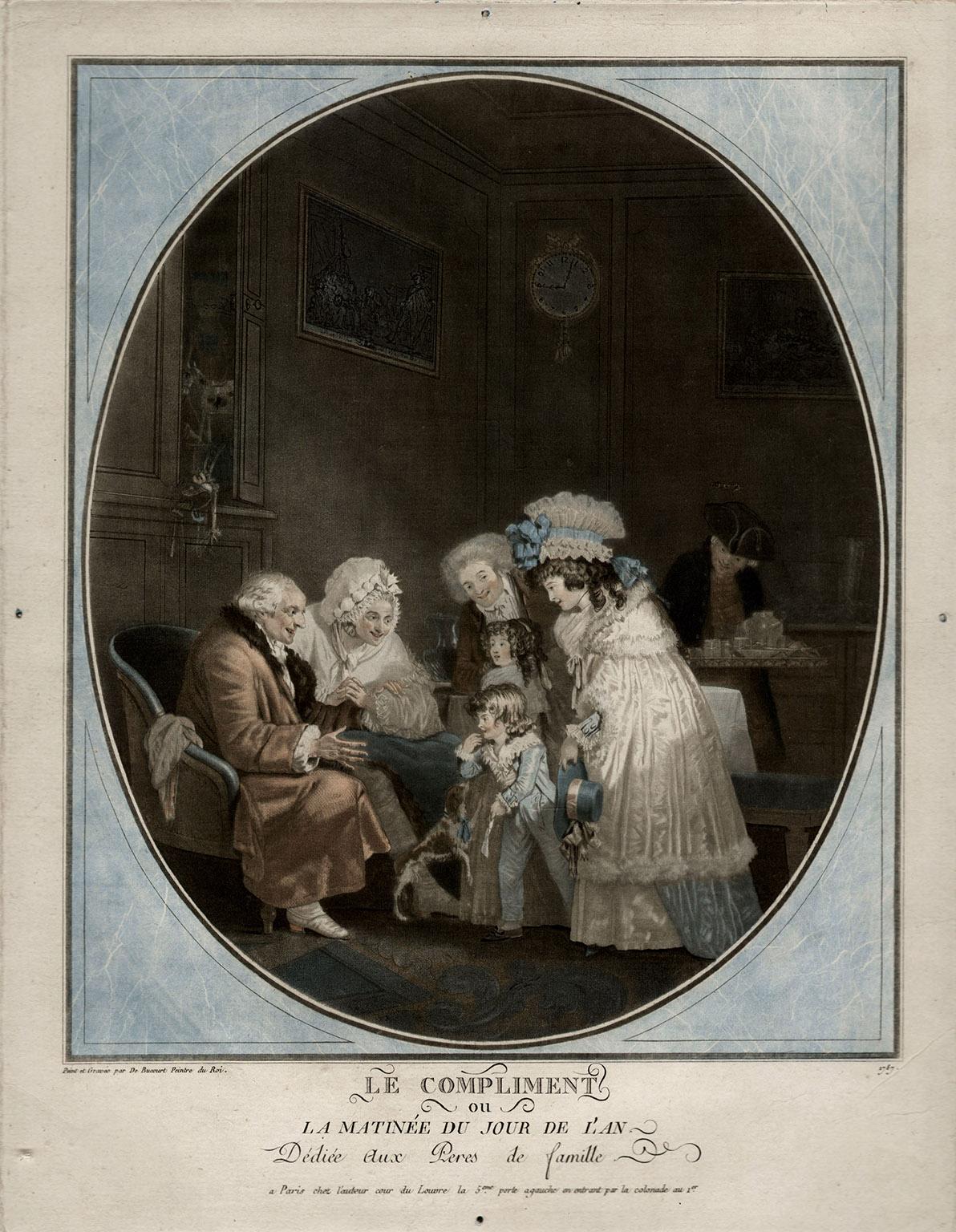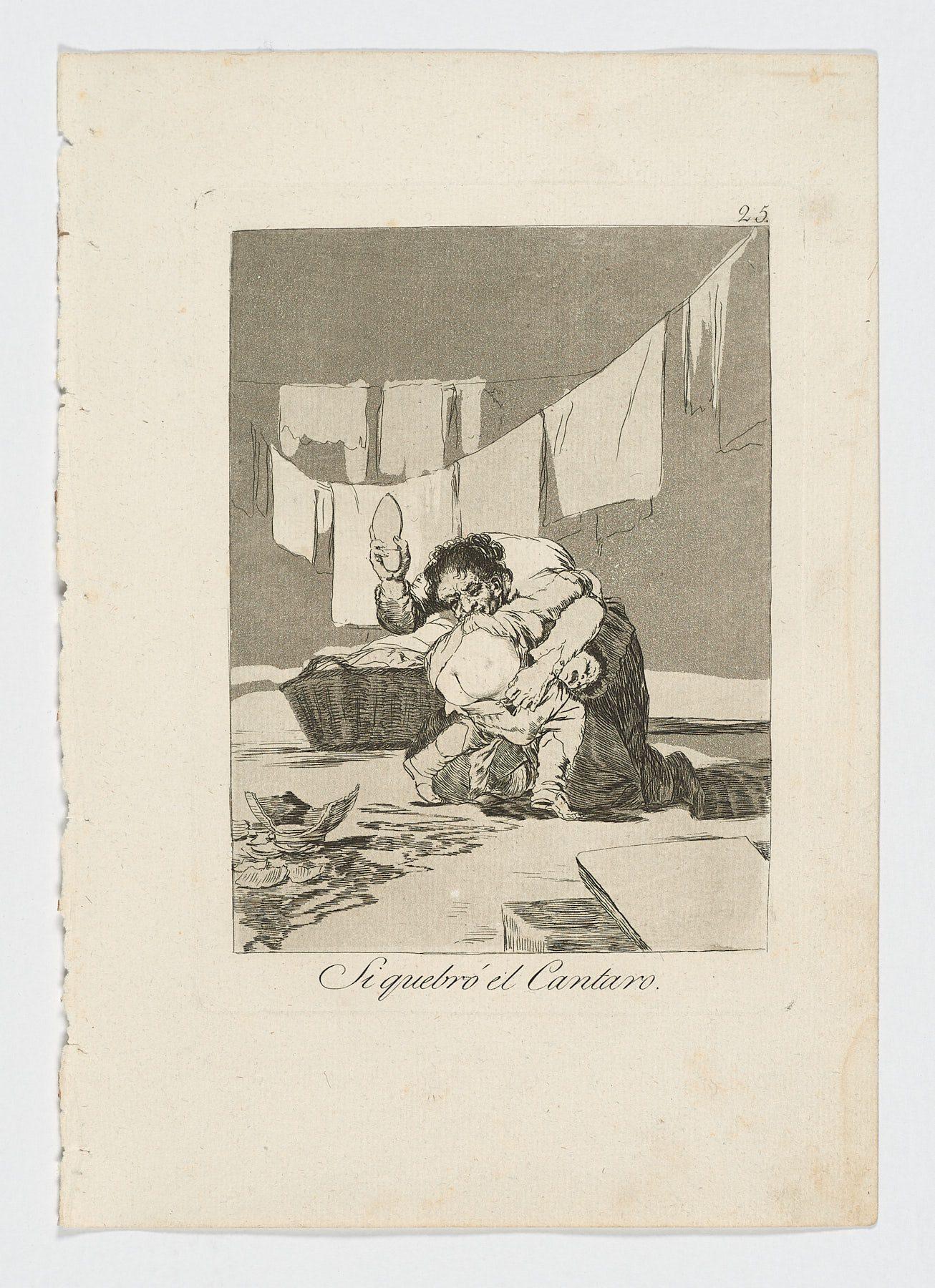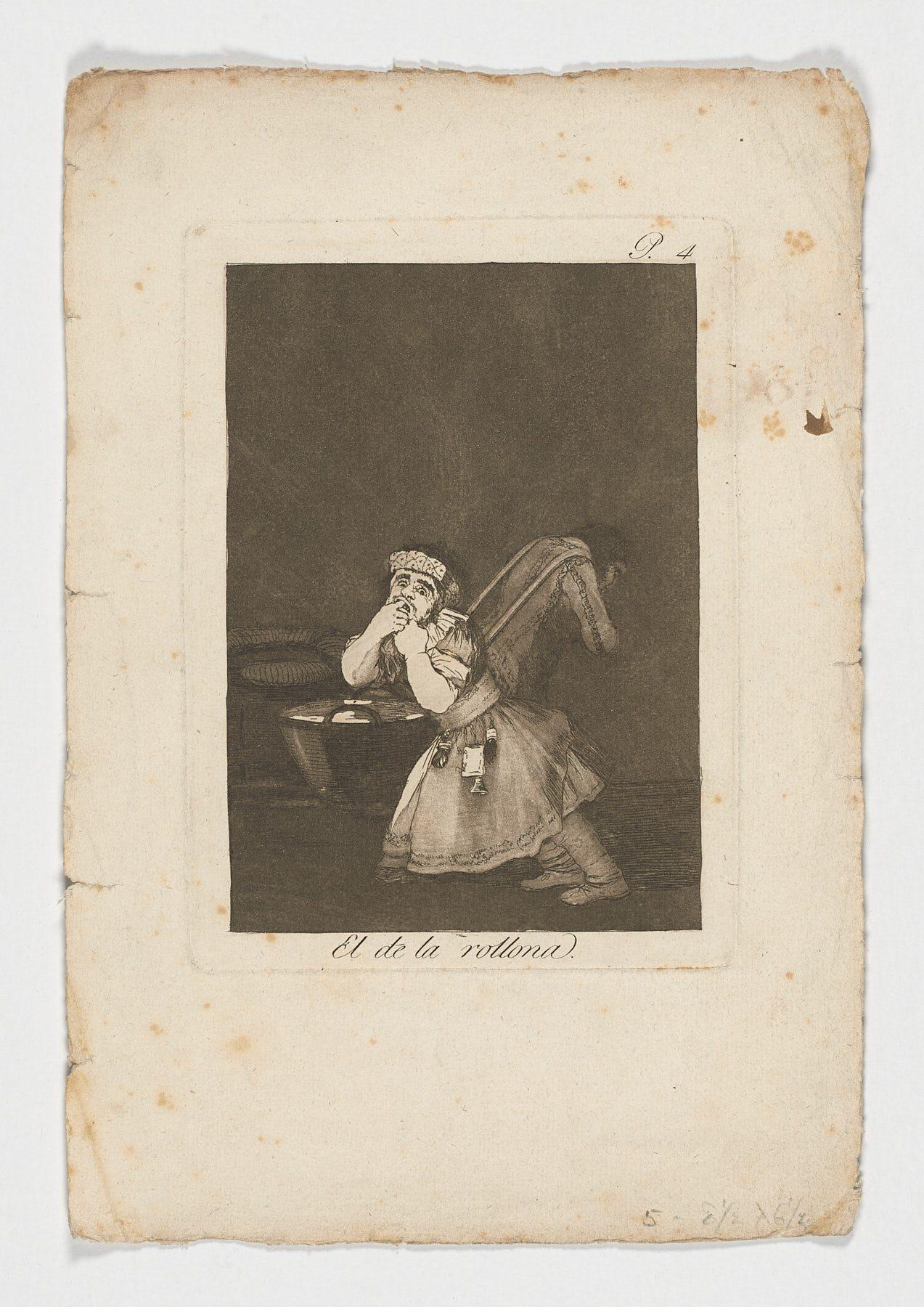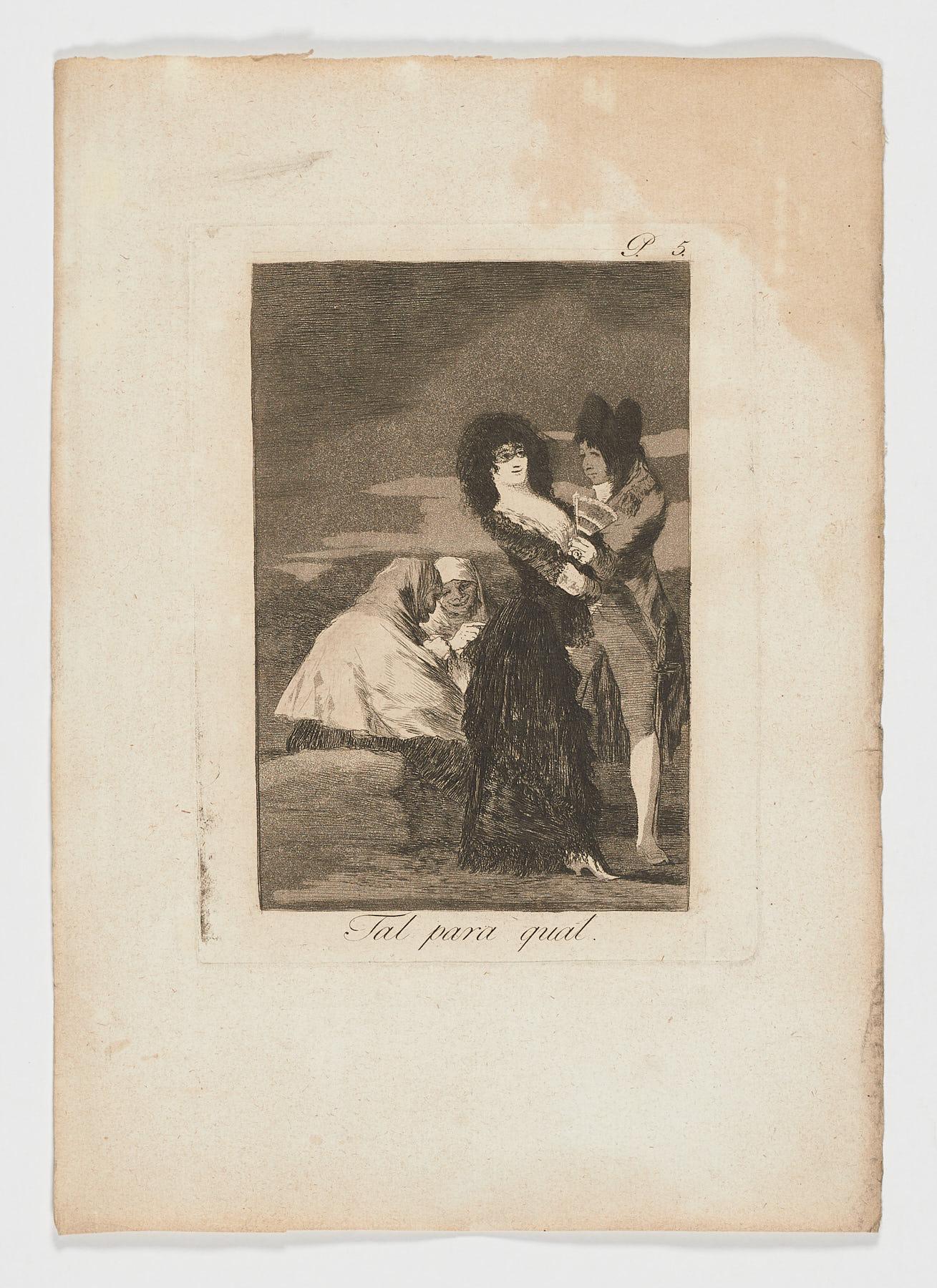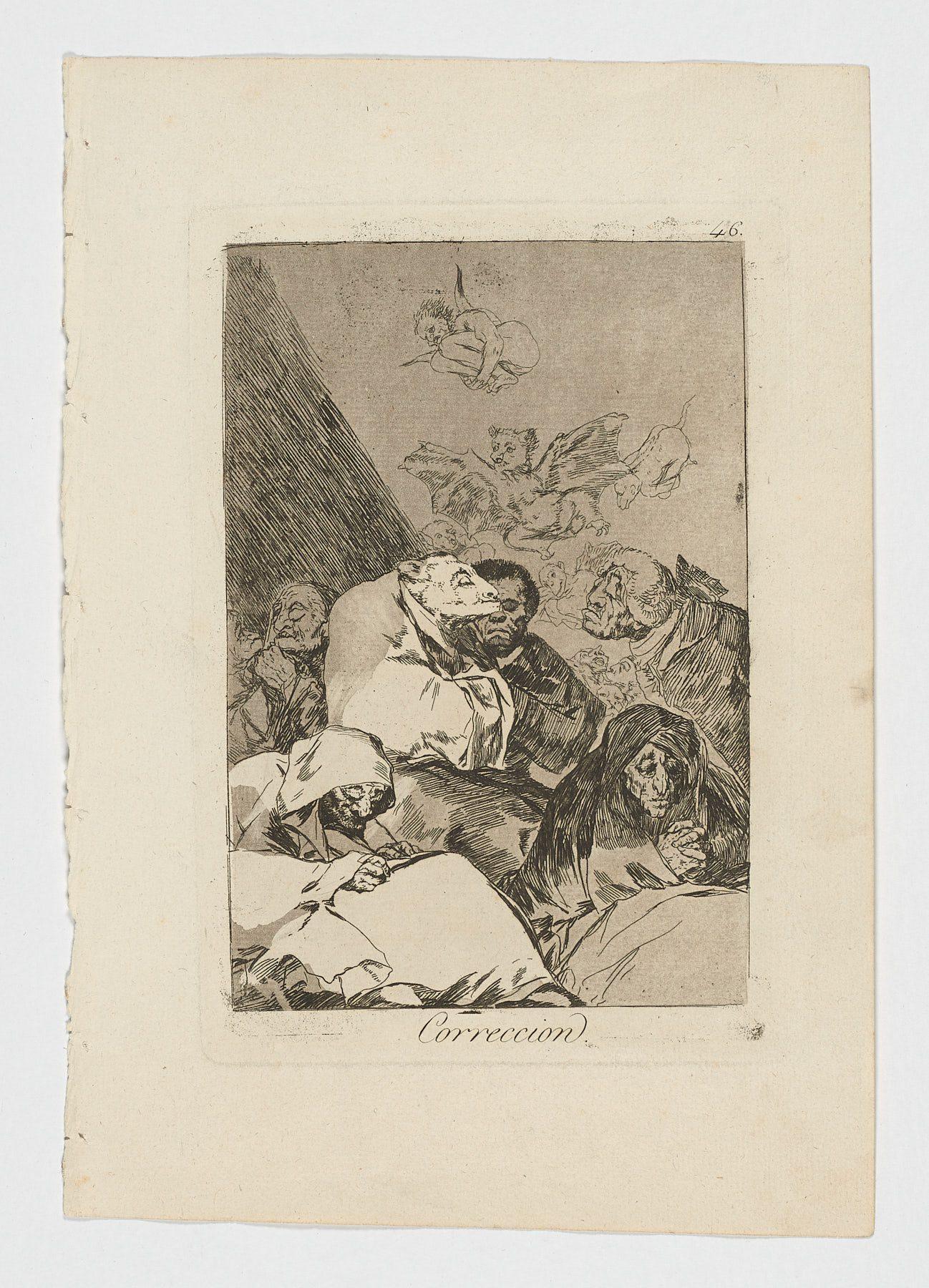Items Similar to Phrosine and Mélidore
Want more images or videos?
Request additional images or videos from the seller
1 of 5
Edouard Joseph DantanPhrosine and Mélidore1879
1879
About the Item
Phrosine and Mélidore
Etching, 1879
Signed in the polate lower left of image
This etching is after the Dantan painting, a copy after the Pierre-Paul Prud’hom painting
Published by Vve. A. Cadart, 56, Bard. Haussman, Paris
A deluxe impression with masked letters
The Prud’hom painting is in the Musée des Beaux-AÉdouard Joseph Dantan was born on 26 August 1848 in Paris. His grandfather, who had fought in the Napoleonic Wars, was a wood sculptor. His father, Antoine Laurent Dantan, and uncle, Jean-Pierre Dantan, were both well-known sculptors.[1] Dantan was a pupil of Isidore Pils and Henri Lehmann at the École nationale supérieure des Beaux-Arts in Paris.[2] At the age of nineteen he won a commission for a large mural painting of The Holy Trinity for the Hospice Brezin at Marne (Seine-et-Oise).[3] Dantan's first exhibit at the Paris Salon was An Episode in the Destruction of Pompeii in 1869. In 1870 the Franco-Prussian War interrupted his work, and he enlisted in the defence force.[4] He was given the rank of a sergeant, and was later promoted to lieutenant.[5] During the war the family home was burned down.[4]
In the years after the war Dantan exhibited a number of other paintings at the Salon including Hercules at the Feet of Omphale (1874), Death of Tusaphane (1875), The Nymph Salmacis (1876), Priam Demanding of Achillees the Body of Hector (1877), Calling of the Apostles Peter and Andrew (1878), Corner of a Studio (1880) and The Breakfast of the Model (1881).[3] He continued to exhibit at the Salon until 1895. In 1890, 1894 and 1895 he served on the jury of the Salon.
For twelve years Dantan's companion was the model Agostina Segatori, who had also posed for artists such as Jean-Baptiste Corot, Jean-Léon Gérôme, Eugène Delacroix and Édouard Manet. She bore a child to Dantan, Jean-Pierre, in 1873. On their separation, Agostina opened Café du Tambourin on the Boulevard de Clichy that became a meeting place for artists.[6][fn 1] Dantan spent his summers in Villerville, where he died on 9 July 1897 when the carriage in which he was riding crashed violently into the village church.[8]
Style and reception
Coin d'atelier (1880)
At the 1870 exposition of the Ecole Nationale des Beaux-Arts Dantan received an honorable mention for his submission for the prix de Rome.[9] In 1874 he won a third class medal for his painting of a monk carving a Christ in wood.[10] In 1880 he won a second class medal for his painting Un coin d'atelier (a corner of the workshop).[11] He received a gold medal at the Paris Exposition of 1889,[12] and a number of his paintings were bought by the French state.
Dantan's works followed the academic tradition of painting, and were praised by his contemporaries. His technical mastery is illustrated by such paintings as Un coin d'atelier (1880), where he depicts his father working on a bas-relief in his studio, seen from behind. The studio is cluttered with paintings and sculptures. In the foreground, a nude woman is taking a break from modelling. A critic praised the painting for following all the rules of trompe-l'oeil and stereoscopic photography.[13] Describing a painting of a group of sailors following a clergyman going to bless the sea, another critic said in 1881 "he has written a page before which believers and skeptics must raise their hats".[14]
His Le déjeuner du modèle exhibited in the Salon in 1881 shows a model eating a plate of eggs in a break from the posing session. The scene is illuminated by a clear white light, with a delicate sense of reflected light. One reviewer said that Dantan had treated the subject with taste and grace, when it could easily have fallen into vulgarity.[11] He was by no means limited to one genre. Other paintings at this time included one of his mother outdoors in her invalid chair, her face sad, a pastoral portrait of a young blonde Édouard Joseprts de Bordeaux
The young Phrosine, at right, falls in love with Mélidore, but her jealous brothers separate the two and banish Mélidore to a life as a hermit on a nearby island. Desperate to see her beloved, Phrosine swims across the channel at night, and collapses, naked, into his arms.
Sheet size:15 15/16 x 11 1/8 inches
Plate size: 12 9/16 x 9 1/2 inches
From Wikipedia, the free encyclopedia
Édouard Joseph Dantan (26 August 1848 – 7 July 1897) was a French painter in the classical tradition. He was widely recognized in his day, although he was subsequently eclipsed by painters with more modern styles.
Biography
Édouard Joseph Dantan was born on 26 August 1848 in Paris. His grandfather, who had fought in the Napoleonic Wars, was a wood sculptor. His father, Antoine Laurent Dantan, and uncle, Jean-Pierre Dantan, were both well-known sculptors. Dantan was a pupil of Isidore Pils and Henri Lehmann at the École nationale supérieure des Beaux-Arts in Paris. At the age of nineteen he won a commission for a large mural painting of The Holy Trinity for the Hospice Brezin at Marne (Seine-et-Oise). Dantan's first exhibit at the Paris Salon was An Episode in the Destruction of Pompeii in 1869. In 1870 the Franco-Prussian War interrupted his work, and he enlisted in the defence force. He was given the rank of a sergeant, and was later promoted to lieutenant. During the war the family home was burned down.
In the years after the war Dantan exhibited a number of other paintings at the Salon including Hercules at the Feet of Omphale (1874), Death of Tusaphane (1875), The Nymph Salmacis (1876), Priam Demanding of Achillees the Body of Hector (1877), Calling of the Apostles Peter and Andrew (1878), Corner of a Studio (1880) and The Breakfast of the Model (1881). He continued to exhibit at the Salon until 1895. In 1890, 1894 and 1895 he served on the jury of the Salon.
For twelve years Dantan's companion was the model Agostina Segatori, who had also posed for artists such as Jean-Baptiste Corot, Jean-Léon Gérôme, Eugène Delacroix and Édouard Manet. She bore a child to Dantan, Jean-Pierre, in 1873. On their separation, Agostina opened Café du Tambourin on the Boulevard de Clichy that became a meeting place for artists. Dantan spent his summers in Villerville, where he died on 9 July 1897 when the carriage in which he was riding crashed violently into the village church.
Style and reception
At the 1870 exposition of the Ecole Nationale des Beaux-Arts Dantan received an honorable mention for his submission for the prix de Rome. In 1874 he won a third class medal for his painting of a monk carving a Christ in wood. In 1880 he won a second class medal for his painting Un coin d'atelier (a corner of the workshop). He received a gold medal at the Paris Exposition of 1889, and a number of his paintings were bought by the French state.
Dantan's works followed the academic tradition of painting, and were praised by his contemporaries. His technical mastery is illustrated by such paintings as Un coin d'atelier (1880), where he depicts his father working on a bas-relief in his studio, seen from behind. The studio is cluttered with paintings and sculptures. In the foreground, a nude woman is taking a break from modelling. A critic praised the painting for following all the rules of trompe-l'oeil and stereoscopic photography. Describing a painting of a group of sailors following a clergyman going to bless the sea, another critic said in 1881 "he has written a page before which believers and skeptics must raise their hats".
His Le déjeuner du modèle exhibited in the Salon in 1881 shows a model eating a plate of eggs in a break from the posing session. The scene is illuminated by a clear white light, with a delicate sense of reflected light. One reviewer said that Dantan had treated the subject with taste and grace, when it could easily have fallen into vulgarity. He was by no means limited to one genre. Other paintings at this time included one of his mother outdoors in her invalid chair, her face sad, a pastoral portrait of a young blonde woman in a blue dress, full of life, and of a poor fisherman dining in his miserable cabin on a piece of bread and an onion.
Later, Dantan's classical style fell out of fashion. Writing of the first exhibition of the Société Nationale des Beaux-Arts in the Champ de Mars in 1890, Walter Sickert was scathingly critical of most of the paintings, making exceptions for a series of far-eastern landscapes by Louis-Jules Dumoulin, a painting by Édouard Manet, some portraits by Jules-Élie Delaunay and some studies by Dantan. He praised Dumoulin as a master, described Manet's work as brilliant and powerful, Delaunay's as respectable and Dantan's as conscientious.
Major works
Fête Foraine de Saint-Cloud (1879)
Un Coin du Salon en 1880
At first, Dantan's subjects were mainly drawn from classical mythology or religious subjects, as was common in his day. Later he made a number of paintings of scenes from sculpture workshops, familiar from his childhood. He also painted portraits and views of Villerville.
1869 Episode of the destruction of Pompeii
1872 The Trinity, chapel of the Hospital in Brezen-on-the-Marne
1872 Portrait His father, working on a marble bust
1874 Hercules at the feet of Omphale
1874 A monk as a wood sculptor, Musée des Beaux-Arts de Nantes
1875 The Quoit-Thrower, Musée des Beaux-Arts de Rouen, Rouen
1876 The Nymph Salmacis
1878 Phrosine et Mélidore after Pierre Paul Prud'hon, Musée des Beaux-Arts de Bordeaux
1879 Fête Foraine de Saint-Cloud
1880 Christ on the Cross, Church of Dombrowa, Poland
1880 Un Coin d'atelier, Paris, Palais du Luxembourg (filed in 1925, not found in 1977)
1880 Un Coin du Salon de 1880 (sale Sotheby's New York, 24 May 1995)
1881 Le déjeuner du modèle
1882 Corpus Christi Day
1884 Burial of a child, Villerville, Musée Malraux, Le Havre
1885 Shooting their nets
1886 Entracte Un à la Comedie-Francaise de première un soir, en 1885, Comédie-Française, Paris
1887 Un moulage sur Nature, Konstmuseum Gothenburg, Gothenburg
1887 L'Atelier du sculptor
- Creator:Edouard Joseph Dantan (1848 - 1897, French)
- Creation Year:1879
- Dimensions:Height: 10.5 in (26.67 cm)Width: 9.44 in (23.98 cm)
- Medium:
- Movement & Style:
- Period:
- Condition:
- Gallery Location:Fairlawn, OH
- Reference Number:
About the Seller
5.0
Recognized Seller
These prestigious sellers are industry leaders and represent the highest echelon for item quality and design.
Platinum Seller
These expertly vetted sellers are 1stDibs' most experienced sellers and are rated highest by our customers.
Established in 1978
1stDibs seller since 2013
711 sales on 1stDibs
Typical response time: 1 hour
Associations
International Fine Print Dealers Association
- ShippingRetrieving quote...Ships From: Akron, OH
- Return PolicyA return for this item may be initiated within 10 days of delivery.
More From This SellerView All
- A Cart RaceBy Thomas RowlandsonLocated in Fairlawn, OHA Cart Race Hand colored etching & aquatint, 1788 Signed in the plate (see photo) Published by William Hollande, London Inscribed in the plate with title, artist's name and publication line 'Rowlandson. 1788./ London. Pubd 1789 by Wm Holland No 50. Oxford Street.' Reference: M.Dorothy George, 'Catalogue of Political and Personal Satires in the British Museum', VI, 1938) British Museum Satires 7607 Grego, 'Rowlandson', i. 260, Grego II.392 Provenance: Chris Beetles Ltd., London (label), 2003 Jeffrey M. Kaplan, Washington, D.C. (label) Condition: Excellent Archival framing by Chris Beetles Ltd., London Note: The British Museum has two impressions, one trimmed the other full sheet as this example. Accession Number: 1868,0711.35 The Metropolitan Museum has an impression: Accession number 59.533.314 Fitzwilliam Museum: Accession number: 34.14-286 Cleveland Museum of Art accession number: 1958.10 Image description per BM: Three ramshackle two-wheeled carts drawn by wretched horses race (right to left) against a background formed by the church... Note: The British Museum has two impressions, one trimmed the other full sheet as this example. Accession Number: 1868,0711.35 The Metropolitan Museum has an impression: Accession number 59.533.314 Fitzwilliam Museum: Accession number: 34.14-286 Cleveland Museum of Art accession number: 1958.10 Image description per BM: Three ramshackle two-wheeled carts drawn by wretched horses race (right to left) against a background formed by the clouds of dust which they have raised, with a row of gabled houses (right) inscribed 'St Giles', terminating in a church spire (left), and probably representing Broad St. Giles. The occupants of the carts are Irish costermongers typical of St. Giles. The foremost horse gallops, urged on by the shouts of a standing man brandishing a club. The other occupants, two women and a man, cheer derisively the next cart, whose horse has fallen, one woman falling from it head-first, another lies on the ground. The driver lashes the horse furiously. The third cart, of heavier construction, is starting. The horses are partly obscured by the clouds of dust, but denizens watch from casement windows and a door. Two ragged urchins (right) cheer the race; a dog barks. "It was said that the amount of copper Thomas Rowlandson etched would sheathe the British Navy. An inveterate gambler, for much of his life Rowlandson had to produce a flood of his comic prints to stay ahead of financial losses.A wealthy uncle and aunt raised Rowlandson after his textile-merchant father went bankrupt. His career developed quickly. He entered London's Royal Academy Schools in 1772, visited Paris in 1774, exhibited at the Royal Academy in 1775, and won a silver medal in 1777. He left school in 1778 to set up in business. Rowlandson's depictions of life in Georgian England exposed human foibles and vanity with sympathy and rollicking humor. During the 1780s he consolidated the delicate style he used for his coarse subjects. He worked mainly in ink and watercolor, his rhythmic compositions, flowing line, and relaxed elegance inspired by French Rococo art...Category
1780s Romantic Figurative Prints
MaterialsAquatint
- L'ACTEUR . . . . - On voit bien qu'il fait chaud . . . . . . . trois spectateursBy Honoré DaumierLocated in Fairlawn, OHL'ACTEUR . . . . - On voit bien qu'il fait chaud . . . . . . . trois spectateurs dans la salle ..... faut-il commencer ? . . . . LE DIRECTEUR .- Et encore un des trois est le vendeu...Category
1850s Romantic Figurative Prints
MaterialsLithograph
- Passage du Mont Saint-BernardBy Jean Louis Andre Theodore GericaultLocated in Fairlawn, OHTheodore Gericault (1791-1824) Passage du Mont Saint-Bernard Lithograph, 1822 Signed and titled in the stone As published in Arnault "Vie politique et militair...Category
1820s Romantic Figurative Prints
MaterialsLithograph
- Napoleon a Batille de DresdeBy Hippolyte BellangéLocated in Fairlawn, OHBatille de Dresde Lithograph, 1822 From: Arnault, A. V. Vie Politique et Militaire de Napoleon (120 plates) Published, Paris, Librairie Historiquem 1822 Printed by C. Motte, Paris Co...Category
1820s Romantic Figurative Prints
MaterialsLithograph
- Napoleon a BautzenBy Hippolyte BellangéLocated in Fairlawn, OHNapoleon a Bautzen Lithograph, 1822 Signed in the stone (see photo) From: Arnault, A. V. Vie Politique et Militaire de Napoleon (120 plates) Published, Paris, Librairie Historiquem 1...Category
1820s Romantic Figurative Prints
MaterialsLithograph
- Napoleon StandingLocated in Fairlawn, OHNapoleon Standing Lithograph, 1822 Signed in the stone lower left corner of image (see photo) From: Arnault, A. V. Vie Politique et Militaire de Napoleon (120 plates) Published, Paris, Librairie Historiquem 1822 Printed by C. Motte, Paris Considered to be the major pictorial treatise on Napoleon and his military conquests. Image size: 14 x 9 3/4 inches Sheet size: 23 5/8 x 17 3/4 inches Condition: Very good Horizontal prints...Category
1820s Romantic Figurative Prints
MaterialsLithograph
You May Also Like
- German folk dancing, set of six engravings, circa 1720Located in Melbourne, VictoriaA series of six German engravings of couples dancing. Published by Josef Friderick Leopold in Bavaria. 260mm by 165mm (platemark)Category
Early 18th Century Romantic Figurative Prints
MaterialsEtching
- Le Compliment & Les Bouquets, pair French aquatints by Debucourt , 1787 and 1788Located in Melbourne, Victoria'Le Compliment ou La Matinee du Jour de L'an, Dediee aux Peres de Famille' (The Compliment, or New Year's Morning, Dedicated to the Fathers of the Family) and it's pair 'Les Bouquets...Category
Late 18th Century Romantic Figurative Prints
MaterialsAquatint
- Francisco De Goya Caprichos Si quebró el Cantaro 1st edition original art printBy Francisco GoyaLocated in Miami, FLFrancisco De Goya (Spain, 1746-1828) ¨Si quebró el Cantaro¨ Series Caprichos. Estampa 25, ca.1797-1799 etching, aquatint, dry point on laid paper 11.6 x 8.1 in. (29.3 x 20.5 cm.) 1st...Category
1790s Romantic Prints and Multiples
MaterialsLaid Paper, Etching, Aquatint
- Francisco De Goya Caprichos Tal para cual 1st edition original art print SpanishBy Francisco GoyaLocated in Miami, FLFrancisco De Goya (Spain, 1746-1828) ¨Si quebró el Cantaro¨'Tal para cual¨ Serie Caprichos. Estampa 05, ca.1797-1799 etching, aquatint, dry point on laid paper 12.4 x 8.7 in. (31.3 ...Category
1790s Romantic Prints and Multiples
MaterialsLaid Paper, Etching, Aquatint
- Francisco De Goya Caprichos Correccion 1st edition original art print SpanishBy Francisco GoyaLocated in Miami, FLFrancisco De Goya (Spain, 1746-1828) ¨Correccion¨ Serie Caprichos. Estampa 46, ca.1797-1799 etching, aquatint on laid paper 11.6 x 8.1 in. (29.3 x 20.5 cm.) 1st Edition Iron without ...Category
1790s Romantic Prints and Multiples
MaterialsLaid Paper, Etching, Aquatint
- Francisco De Goya Caprichos El de la rollona 1st edition original art printBy Francisco GoyaLocated in Miami, FLFrancisco De Goya (Spain, 1746-1828) 'El de la rollona". Serie Caprichos. Estampa 04, ca. 1797-1799 burnished aquatint, etching on laid paper 12.6 x 8.6 in. (32 x 21.8 cm.) 1st Editi...Category
1790s Romantic Prints and Multiples
MaterialsLaid Paper, Etching, Aquatint
Recently Viewed
View AllMore Ways To Browse
Antique Invalid Chair
Andrew Apostle
White Louis 8 Dining Chairs
Jury Chairs Antique
A La Place Clichy
Trinity Size 8
Antique Dining Chairs X 8
8 French Chairs With Arms
4 Dining Chairs Print
10 Antique Dining Chairs
3 Antique Dining Chairs
Antique Dining Chairs X 4
Blonde Wood Dining Chair
5 Antique Dining Chairs
Wood Corpus Of Christ
Swim Hat
12 Antique Dining Chairs
Antique Chapel Chair

